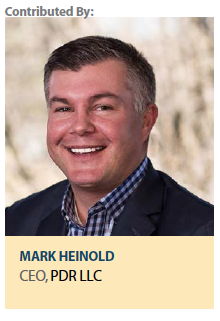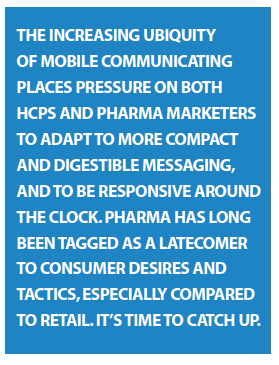 We are accustomed to defining the Point of Care (POC) segment of healthcare as physician offices, hospitals, and pharmacies. Also, retail clinics are growing at 25% to 30% annually, adding to the locations where healthcare is available. But, as with everything digitally connected these days, the definition is increasingly out-of-date. As mHealth platforms continue to grow in usability, diversity, and penetration, POC has come to include home computers, mobile phones, tablet computers, and personal digital assistants.
We are accustomed to defining the Point of Care (POC) segment of healthcare as physician offices, hospitals, and pharmacies. Also, retail clinics are growing at 25% to 30% annually, adding to the locations where healthcare is available. But, as with everything digitally connected these days, the definition is increasingly out-of-date. As mHealth platforms continue to grow in usability, diversity, and penetration, POC has come to include home computers, mobile phones, tablet computers, and personal digital assistants.
Additionally, the menu of communications and the ways in which POC affects patient care have continued to grow. In this new two-way paradigm, patients are not only receiving information but also delivering it, via wearables that track the details of their conditions and general health, and even by checking their own research and personal experience against what the doctor might recommend.
All this has helped propel the POC sector to a CAGR (compound annual growth rate) of 10% and a current size of $440 million, heading for $500 million or more in 2016. But it brings with it obligations that are rapidly changing how we use the POC opportunities.
Where, When, How to Communicate
Despite the increasing power patients are asserting in the management of their health, they still place a great deal of trust in their healthcare professionals (HCPs). Recent studies show that 88% consider physicians the most credible source, and 81% trust pharmacists as well. This means it still makes sense for pharma marketers to work with and through HCPs to deliver information.
 But the increasing ubiquity of mobile communicating places pressure on both HCPs and pharma marketers to adapt to more compact and digestible messaging, and to be responsive around the clock.
But the increasing ubiquity of mobile communicating places pressure on both HCPs and pharma marketers to adapt to more compact and digestible messaging, and to be responsive around the clock.
Pharma has long been tagged as a latecomer to consumer desires and tactics, especially compared to retail. It’s time to catch up.
Although patients still prefer face-to-face appointments, they also want HCPs who communicate via email, and 49% additionally use Facebook to connect with their doctors.
Expanding this access, there are over 200 telehealth networks operating in the U.S., connecting to over 3,500 healthcare sites. And government is recognizing this trend in terms of regulations. The Department of Health and Human Services has issued rules granting patients direct access to lab results. Currently, 47 states reimburse physicians for live video consult through Medicaid, and 29 reimburse for a facility or transmission fee.
Only 16 reimburse for remote patient monitoring, but that is expected to increase, too, as technology makes it easier for a doctor to remotely monitor various aspects of a patient’s health. Medical labs are making test results easier for patients and caregivers to understand.
The FDA has held hearings on pharma communication to consumers and is considering new guidelines on communicating risks more clearly.
The Virtual Point of Care Era
What this all adds up to is a landscape of “virtual point of care" — an environment in which patients can be in touch from virtually anywhere, and will have access to more information that they can understand and question.
They are gathering data from patient advocacy groups and friends, getting second opinions online, doing video chats with their doctors, and sharing information in blogs. Thousands of health apps are being developed (even though many are failing to catch on; expect a shakeout in that industry).
Because this makes it more complicated for marketers to know exactly how and where to provide useful information, the FDA has issued new guidelines on exactly how pharma is permitted to interact on social media platforms.
The most important factor to remember is that all communication must be compatible with the electronic health record (EHR). Think Patients CEO Joe Meadows says, “If your strategy does not heavily integrate with EHRs within two years, your brand will be left in the dust."
How to deal with it? Follow the patient’s path. In addition to staying up-to-date with regulations, what this drives us to is a few simple rules. Gain an understanding of what patients want. Work through the HCPs they trust. Conduct an ongoing dialogue with those HCPs. Tailor messaging to the platform. And keep your communications as easy to understand, educational, helpful, and patient-friendly as possible. (PV)
As a leading provider of behavior-based prescription management programs, PDR provides event-driven and clinically relevant healthcare messaging through its patented process that improves patient compliance and outcomes, while preserving privacy. This network is made up of e-prescribing, electronic medical record (EMR), and electronic health record (EHR) applications, chain and independent pharmacies, and sponsors of healthcare-related education such as pharmaceutical manufacturers, health plans, payers, and pharmacy benefit managers.
For more information, visit pdr.net.










